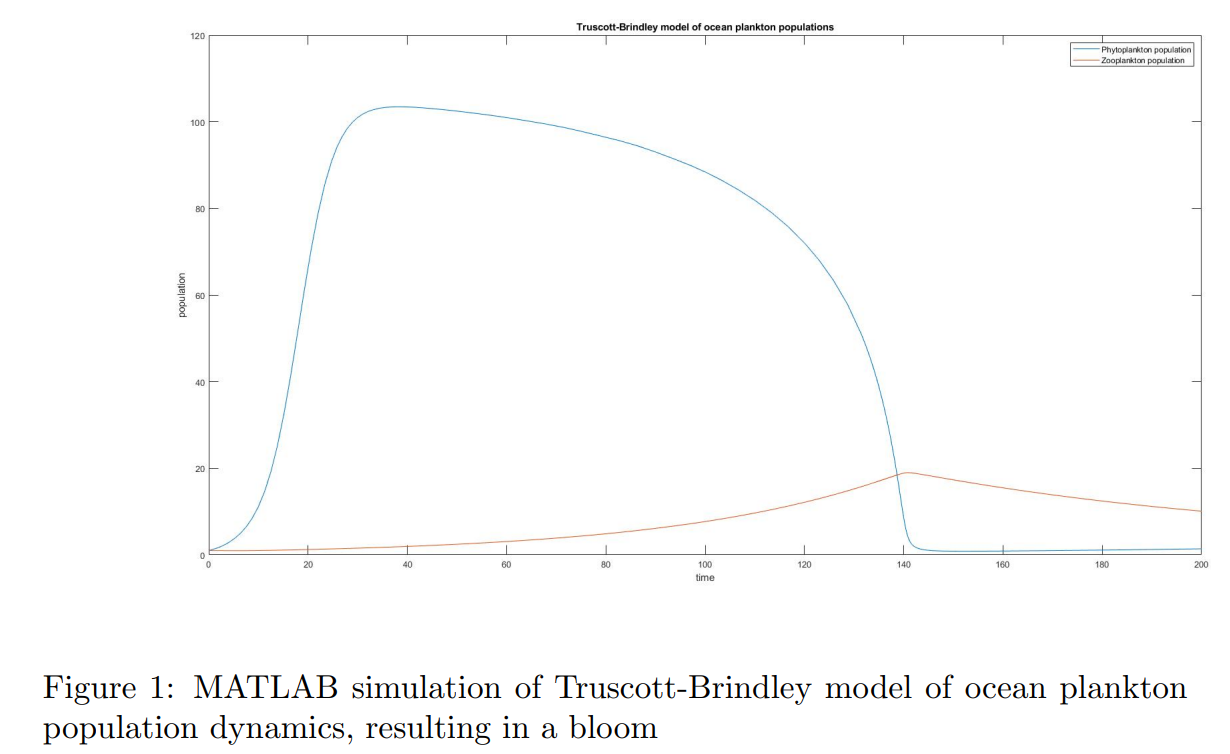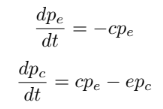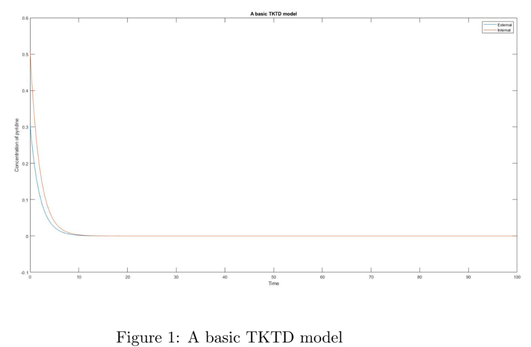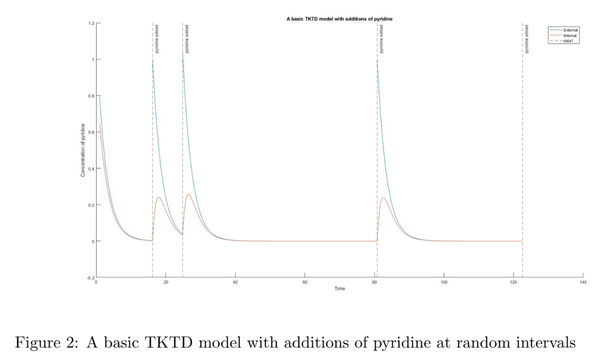Adopt a lobster adopt now
Masters students Elisabeth James and Matthew Sullivan work with the Whitby Lobster Hatchery to understand the role of lobsters in the local ecology. Keep checking back here for updates.
Elisabeth, Joe, Matthew and lobster pots outside the Whitby Lobster Hatchery, Pier Road, Whitby.
Two York Masters students, Elisabeth James and Matthew Sullivan, have started final year research projects applying their mathematics to the world of sustainable fisheries and conservation.
Working with Joe Redfern at the Whitby Lobster Hatchery and Jon Pitchford at York, they will be trying to understand the role of lobsters in the local ecology. They will also explore the possible causes of a recent coastal mortality event which decimated crab populations in the North East coast.
The Whitby Lobster Hatchery aims to conserve Whitby's fishing heritage, and to encourage a sustainable and profitable local fishery; the hope is that careful mathematics can help evaluate its role and guide its future work.
 Update November 29th:
Update November 29th:
Project 1 Elisabeth - Mass Mortalities Along the Northeast Coast
This project aims to investigate the causes of the mass mortality event of crabs and lobsters on the North East Coast in Autumn 2021. This could include mathematical modelling of plankton or the spread of pyridine, or alternatively examining the ecotoxicology of pyridine in crabs with toxicokinetic-toxicodynamic (TKTD) models.
Modelling Algal Blooms
Phytoplankton can be modelled using simple Ordinary Diferential Equations (ODEs).
There are two mechanisms: the trigger mechanism which controls the initiation of the outbreak, and the refractory mechanism, which causes the model to return to its original state. Intrinsic factors include nutrients and trace elements, toxins, waste products and predators.
The graph below shows an expect bloom, the rise of the phytoplankton in blue followed by an uptick of 'predatory' zooplankton in red.
 Conditions required for an outbreak, and potential bloom, to occur:
Conditions required for an outbreak, and potential bloom, to occur:
by direct perturbation (like a storm) or seedbeds - populations of dormant dinoflagellates that become active again 2
Increase in r, max growth rate, which is sensitive to (increasing) temperature changes for example
reduction in zooplankton population or their predation efficiency
Modelling of autumn plankton bloom dynamics - Findlay et al. 2005
This model takes P, the phytoplankton population, N the nutrients and M the depth of the mixed layer as its variables. The behaviour is triggered by a sudden mixing event (for example, a storm) which brings up nutrients from lower depths but moves phytoplankton down, negatively affecting their light dependent growth.
 Harmful algal blooms are generally the main cause of shellfish mortalities globally. From satellite imagery we know an algal bloom took place in the area approximately two weeks before the mass mortality event, and that some algal blooms can be harmful to marine life due to the release of toxins and the creation of anoxic conditions. There is sufficient evidence for a harmful algal bloom to be considered a credible theory. Using these or similar models we could try to recreate the conditions before the bloom and see the likelihood and strength of a bloom, however this wouldn’t differentiate between species of phytoplankton and thus whether or not any potential bloom was harmful.
Harmful algal blooms are generally the main cause of shellfish mortalities globally. From satellite imagery we know an algal bloom took place in the area approximately two weeks before the mass mortality event, and that some algal blooms can be harmful to marine life due to the release of toxins and the creation of anoxic conditions. There is sufficient evidence for a harmful algal bloom to be considered a credible theory. Using these or similar models we could try to recreate the conditions before the bloom and see the likelihood and strength of a bloom, however this wouldn’t differentiate between species of phytoplankton and thus whether or not any potential bloom was harmful.
Project 2 Matthew - Assessing ecosystem level changes caused by an enhanced local hatchery and fishery, in collaboration with the Whitby Lobster Hatchery
Fitting a current mathematical model to the Whitby ecosystem to assess the potential impact of the stock enrichment aims of Whitby Lobster Hatchery. Can it be done?
Mizer has a model of the North Sea built in - job done... Not quite. This model may provide a useful starting point for building our up to date model but there are a few problems which need addressing before we have a model appropriate to our investigation.
• it does not incorporate benthic species such as lobsters which is of course central to our investigation - so we need to extend this model to consider the interactions mentioned in the aforementioned feasibility goal.
• it is built on data no more recent than 2010 - it is important to check that projections of this model match current data on the ecosytem and if necessary, refit the model appropriately. It is also key to try to validate the model with available data to verify that our model can provide useful predictions about the ecosystem’s evolution.
Mizer is very capable when it comes to simulating different fishing gear and effort however, adding species into the model is an unusual use case. As such, there is no simple way to tell mizer to ”add x amount of lobsters of y size to the model” (it becomes even more complicated if we want to do this periodically, i.e. only during a few months a year) so we will need to develop a means to do so. This will likely involve delving into the source code of mizer and building such functionality manually.
Investigating the hatchery’s impact on the ecosystem:
How would the lobster populations in Whitby change without the input of the hatchery?
What impact will the hatchery have on future lobster populations?
How will fishing production be impacted as a result of the hatchery?
What impact will the hatchery have on other species within the ecosystem?
By comparing the predictions of the model with and without the hatchery’s input, we will be able to draw conclusions about the expected impact of the hatchery. We can also investigate how this impact varies under different fishing effort and gear. By evolving the model in time with no fishing and overfishing, we will also be able to compare the impacts of the hatchery on a ’healthy’ and an ’unhealthy’ ecosystem.
A few additional areas of investigation which could prove to be interesting are climate modelling and ecosystem resilience. These are likely out of the scope of this project but may be worth investigating in the future.
Considering the recent mass mortality event along the Yorkshire coast, it may also be useful to utilize the model to assess the ecosystem’s resilience to such events should there be a repeat of this situation? (cf. Elisabeth’s project.)
UPDATE 13/02/2023
Project 1 Elisabeth
TKTD models are used to describe the relationship between a chemical and an organism. Toxicokinetics are what the organism does to the chemical - in this case, how a crab consumes and excretes pyridine. Toxicodynamics are what the chemical does to the organism.
A basic model
In this model we only consider the toxicokinetics, so our two variables are pe, the external concentration of pyridine and pc, the concentration of pyridine inside the crab. To improve accuracy we could split pc into several variables to create a ‘compartmentalised’ model [1], where each compartment represents a step in
the processing of pyridine. This could mean considering the concentration of pyridine in the blood stream, brain and liver seperately, for example.
Our equations are :

The coefficients c and e are the rate of consumption and excretion, respectively. The external concentration of pyridine decays exponentially, and the only fixed point occurs at (0, 0).
An example of what this would look like is shown in Figure 1, taking arbitrary numbers between 0 and 1 for the initial values of pe and pc, and the coefficients c and e. Both concentrations decrease to the fixed point at the origin. In future, the initial value of pe can be chosen and varied to model the effects of a given concentration of pyridine on a crab.
Adding pyridine
Now we add amounts of pyridine at random intervals, using an exponential random variable. Again, an example generated using arbitrary initial conditions and coefficients is shown in Figure 2. Dashed lines indicate when pyridine was added.


References
[1] A. Gergs, F. Gabsi, A. Zenker, and T. G. Preuss. Demographic toxicokinetic–toxicodynamic modeling of lethal effects. Environmental science & technology, 50(11):6017–6024, 2016.
Project 2 Matthew
I am currently working towards creating a model containing lobsters using mizer. To accurately represent the dynamics of the lobster population, it is important to include other key species which they interact with - including crabs, sea urchins, etc. which they predominantly predate on. As such, I am currently scouring the literature to find out the key pieces of information about these species which mizer needs to build a model.
The key pieces of information are the growth parameters, including asymptotic size, size of sexual maturity, and maximum intake rate; predation preferences; and the abundances.
This information is abundant for many key fished species and can be easily obtained through fishbase or sealifebase, however for many benthic species these data are unavailable or difficult to find so this has been a slow process. I am attempting to find some alternate data which can be used to estimate the necessary parameters.
It is also important to note that there may be additional resources available in the benthic layer that are not available to most pelagic species, such as the corals which sea urchins feed on. These are generally not considered in a standard mizer model but will be important to our model so I have been looking at how to use the mizer extension mizerMR which allows multiple resources to be input, which was specifically created for modelling systems where both pelagic and benthic background resources are important.

Become a
Lobster Buddy
Like What You See?
Our Supporters
Contact Details
Whitby Lobster Hatchery,
Pier Road,
Whitby,
North Yorkshire,
YO21 3PU,
United Kingdom
© 2025 by Whitby Lobster Hatchery. All Rights Reserved. Registered Charity 1193944
Designed by Fitzpatrick Design / Developed by Askew Brook